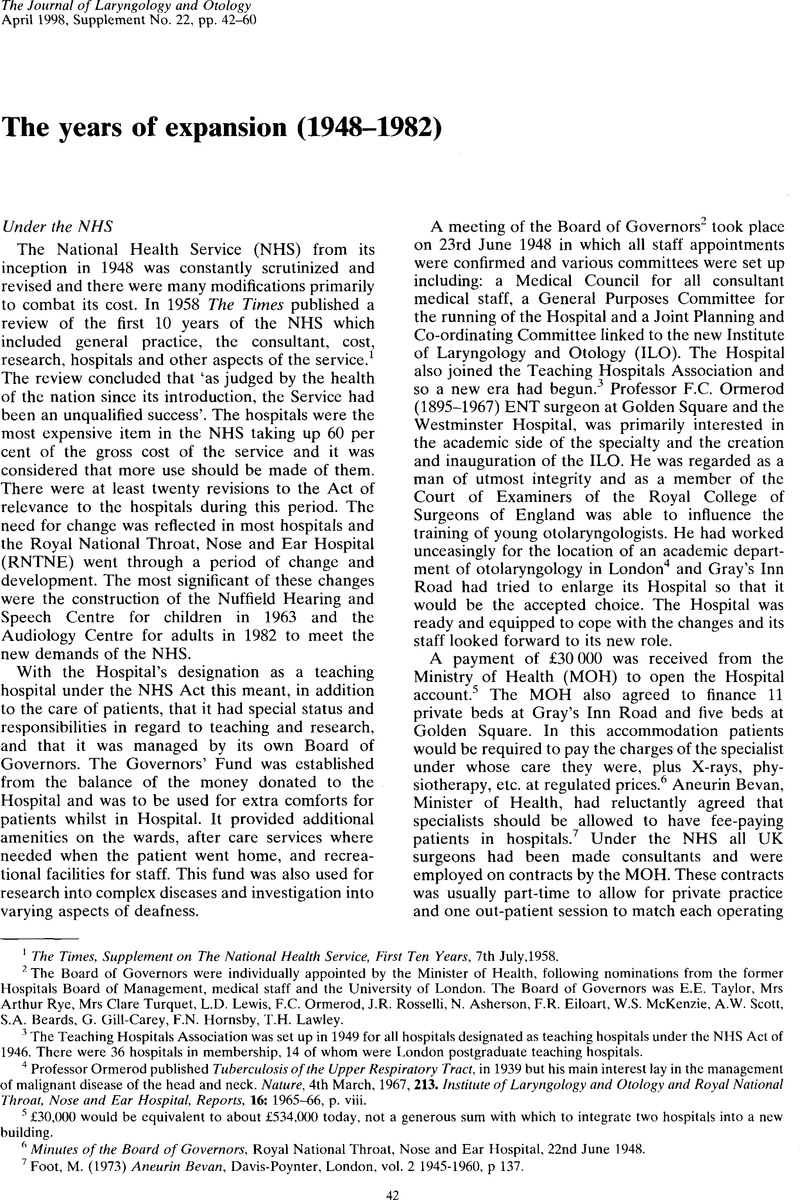2The Board of Governors were individually appointed by the Minister of Health, following nominations from the former Hospitals Board of Management, medical staff and the University of London. The Board of Governors was E.E. Taylor, Mrs Arthur Rye, Mrs Clare Turquet, L.D. Lewis, F.C. Ormerod, J.R. Rosselli, N. Asherson, F.R. Eiloart, W.S. McKenzie, A.W. Scott, S.A. Beards, G. Gill-Carey, F.N. Hornsby, T.H. Lawley.
Google Scholar 